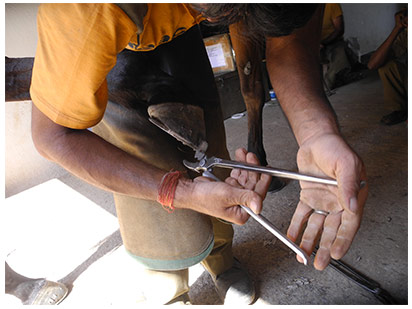
In western countries, animal traction disappeared in the course of the 20th Century with the invention of the railways, electricity and the advent of the combustion engine. In many poorer emerging nations, however, working equines are still very much part of everyday life today. Indeed, it is estimated that half of the world’s population is still dependent on working animals and that about 100 million equines still work in the agricultural domain or as a means of transportation (for bearing water, food, people and goods).
Unfortunately, very often these poorer nations do not possess any training structures for the farriery profession. Practice is largely based on intuition, and know-how is generally passed on from one generation to the next through oral and practical transmission. Knowledge of the anatomy of the horse’s hoof and shoe, knowledge of forging are practically inexistent. And yet, appropriate care to the hoof and correct shoeing are fundamentally important to the well-being of the equine. Its well-being is all the more important in that, if lameness sets in, or exhaustion, the owner’s revenue is under threat…

